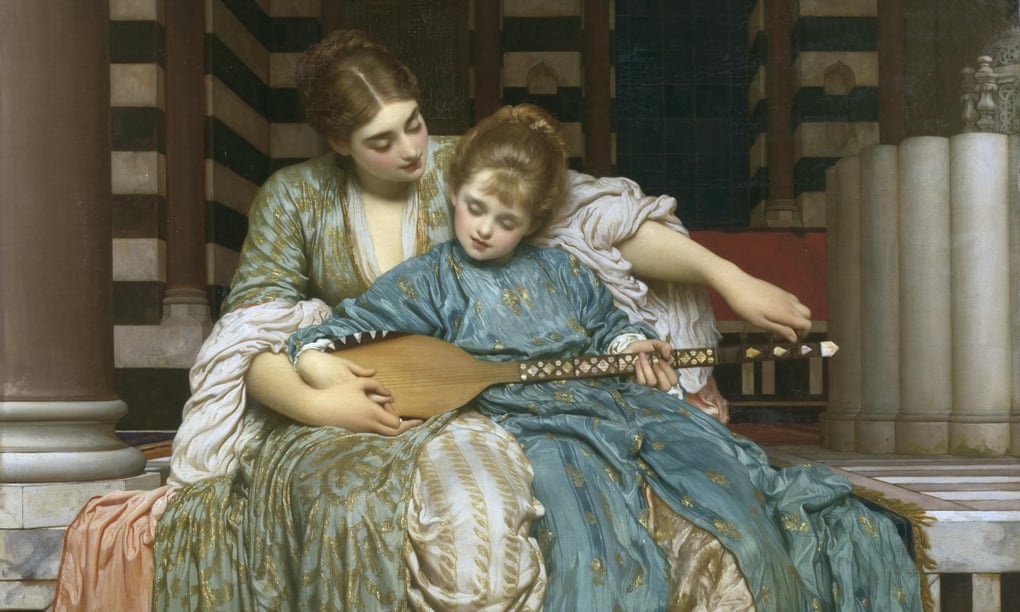Fame is a fickle thing – and this point is well made by the painting of an opulently dressed girl being taught to play a stringed instrument that now hangs in the City of London's Guildhall Art Gallery.
Researchers preparing for an exhibition on Victorian attitudes to childhood, called Seen and Heard, have found that Connie Gilchrist, the forgotten young musician in painter Frederic Leighton's canvas entitled The Music Lesson, was once the toast of England and appeared in many Christmas pantomimes in the West End of London as well as in countless burlesque shows.
The child star, then known as "the original Gaiety Girl", made her name on stage at 12 with a novelty skipping rope act. But even at that early age, Gilchrist's face was well known across London. From the age of four she had posed for many of the great artists of the era, including Frank Holl, William Powell Frith and James McNeill Whistler, and for photographs taken by Lewis Carroll.
"Her features somehow caught the Victorian imagination," said Katty Pearce, curator at the Guildhall gallery. "She was painted several times, even before her fame at the Drury Lane theatre, which took off around the time of the painting and was really like her Britain's Got Talent moment."
Gilchrist's is a remarkable rags-to-riches story, yet one masked by her later identity as Countess of Orkney, the name by which she went until her death in 1946.
Leighton's sumptuous 1877 painting shows Gilchrist playing the saz, a Turkish stringed instrument, in a scene influenced by the artist's visit to Damascus in 1873. But it is not the portrait of a child of the English aristocracy. In fact, Gilchrist had been born in the slum area behind King's Cross station – a district described in 1851 by the writer WM Thomas as "a complete bog of mud and filth" – which was demolished the year after her birth in 1865.
"Connie had been pushed into celebrity by her mother, it seems, in the hope she would be able to pull the family out of poverty – which she eventually did," said Pearce. "But although she appeared in hundreds of stage shows, becoming a star turn, those who met her in artists' studios remembered her as quite a sad little girl."
Gilchrist was six when she began sitting for Leighton, and she is the Arab girl in his painting Little Fatima. Whistler even attempted to depict her skipping rope routine in an etching. By 1875 she had also played a Christmas season in the West End and at 14 she won a full-time contract with London's Gaiety theatre, going on to play Maid Marian in Little Robin Hood and Miranda in a parody of Shakespeare's The Tempest.
But Gilchrist was able to quit the stage for good after doing an American tour in 1886. Her two wealthy benefactors, Lord Lonsdale and the Duke of Beaufort, had introduced her into high society, one buying a London home for all the Gaiety theatre girls, which he then left to Gilchrist, and the other becoming in effect her adoptive father. In 1892 Gilchrist married a Scottish peer, the 7th Earl of Orkney in London, and they lived quietly together for 53 years in his home near Leighton Buzzard.
